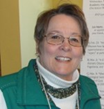Our Story
When the Human Gait Institute’s founder, Dr. Marny Eulberg, a polio
survivor, was faced with having to go into more extensive bracing,
she wanted a more effective brace than the industry standard braces
that are traditionally made of metal and plastic. After much
research, she became the wearer of the Dynamic Bracing Solutions
(DBS) orthosis. With her DBS, she experienced the increased
functionality it provided and a significant improvement in her life
style.
Thinking long-term, she recognized that the principles of the DBS
bracing system needed to endure for continued support to its users.
This was the original impetus for the establishment of HGI. At its
onset, HGI focused in four areas:
-
Assisting in training orthotists in the DBS technology
-
Supporting users and potential users in their use of the
technology
-
Assisting in and/or conducting research to establish the
effectiveness of the DBS and other advanced technologies as needed
-
Providing information on grant resources and grants to those who
need assistance in acquiring the brace.
Over time, and based on the awareness of the creation of other new
bracing technologies and the use of new materials, as well as
recognizing that one type of brace does not fit all, the Board of
HGI recognized that what they have learned about wearing a DBS brace
can be applied to in varying degrees of use to all brace wearers.
Therefore, they changed their mission and their focus to addressing
the issues that anyone who is considering getting a brace for the
first time or who is getting a new brace that is different from
their current brace could face.
Because of their own experiences and their observations of the
experiences of other brace wearers, HGI members have learned that
education and support for brace wearers is minimal at best. This is
not because there are not caring, aware orthotists in the
profession, but primarily because of the requirements of the medical
insurance system and, in some practices, the requirement to meet
product quotas to ensure that the practice is profitable. We hope
that what we provide on this web site can, in our limited way, help
to fill that void and provide support for those who need bracing to
improve and/or maintain their quality of life.
HGI exists through volunteers’ time, talents, and out of pocket
expense payments, and through some small training and research
grants and gifts. It is not affiliated with and operates independent
of Dynamic Bracing Solutions. All of the contents on this web site
are the product of our efforts and made available to the viewer free
of charge. It is copywritten, and should not be used for profit by
any entity.
Please help us by giving to the support of the continuation of this
web site. Any donations will be greatly appreciated and such
donations are tax deductible.
How to donate:
Our organization is small. Our expenses are minimal. We have no
personnel expenses as our work is the result of volunteers’ time and
talents. Our greatest cost is the continued maintenance of our web
site. For those of you who have benefitted from our work and would
like to support the continuation of our web site, you can give to us
by sending a check to:
Human Gait Institute
9461 West 37th Place
Wheat Ridge, CO 80033
HGI is also listed on
Amazon Smiles. So when you
purchase from Amazon and use the web site
smile.amazon.com you can
designate us as a recipient.
Any donations will be greatly appreciated and such donations are tax
deductible. Thank you!






